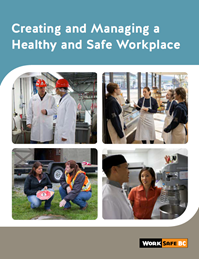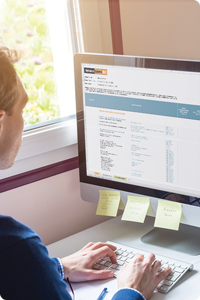Getting started (the basics)
To get started with creating and managing a safe and healthy workplace, follow the links below for more information and resources on the basic requirements.
Everyone in the workplace has certain responsibilities for workplace health and safety. As an employer, it’s important that you understand your own rights and responsibilities for workplace health and safety, as well as those of owners, supervisors, prime contractors, and workers.
As an employer, you’re responsible for providing first aid services so that workers have access to prompt and appropriate treatment if they are injured at the workplace. To determine the first aid requirements for your workplace, first you’ll need to do an assessment. Then, you can review the findings and take necessary steps to put proper first aid procedures in place.
Managing the health and safety side of your business includes managing risk in your workplace. The first step to managing risk is to identify things or situations in your workplace that could cause harm to workers. The next step is to assess the likelihood and seriousness of the potential harm. Once you’ve assessed the risk, you can take steps to control the risk to reduce the potential harm.
We have resources and information to help you manage common risks in specific industries, including hazards and exposures and tools, equipment, and machinery.
All employers are required to have a health and safety program. The type of program you need depends on the number of workers and the risks associated with the work. Learn more about the required elements of an effective health and safety program, and how they can help prevent workplace injury and disease.
As an employer, it’s your responsibility to ensure that all workers are properly trained and oriented to do their work safely. This includes providing safety orientation for new and young workers, training workers on safe work procedures, and providing supervision and ongoing training so they continue to work safely.
Employers are responsible for planning for potential emergencies. Learn how you can prepare to respond in an emergency to keep your workers safe.
Workplace inspections are an effective way to prevent injuries and disease. Performing regular workplace inspections will help you identify conditions or unsafe acts, determine what corrective measures need to be taken, and prevent unsafe work conditions from developing.
When safety-related incidents do happen on the job, both employers and WorkSafeBC have certain responsibilities. You are responsible for immediately reporting serious incidents to us, including when a worker is seriously injured or killed, a building collapses, or there is a major release of a hazardous substance. This is not the same as reporting injuries as part of a claim.
You are also responsible for conducting incident investigations. These investigations help identify root causes and hazards while finding ways to prevent similar incidents from happening in the future.
The joint health and safety committee brings together representatives of the employer and the workers to help the employer identify and resolve health and safety issues in the workplace. You need to establish and maintain a joint health and safety committee if your workplace has 20 or more workers. In smaller workplaces, a worker health and safety representative may be enough.
Beyond the basics
There are a number of steps you can take to improve your health and safety culture and performance, beyond just meeting the basic requirements. Follow these links for more information and resources on these topics:


